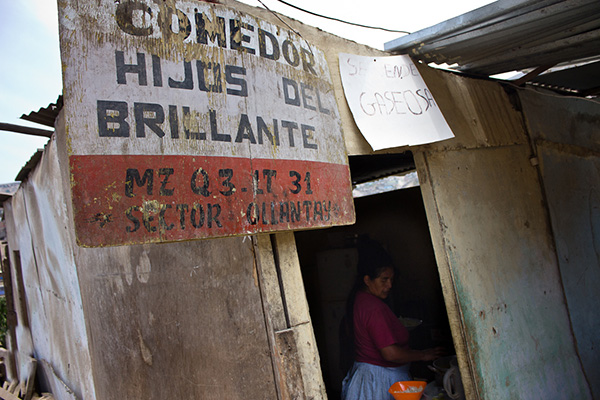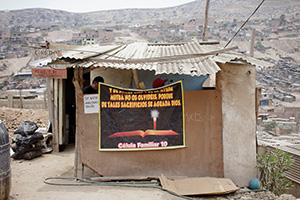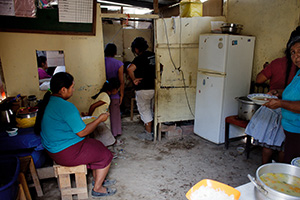A strong sense of solidarity in poor communities can sometimes give rise to innovative solutions in the face of extreme hardship. One example: the case of comedores populares in Lima, Peru — community kitchens that provide nutritious meals for everyone, and that also play an important role as a local gathering place. Anyone can eat at a comedor, but they are especially important for the most vulnerable populations — namely children, the elderly, and handicapped — who may not have the means to obtain a healthy diet. At the Comedor Hijos de Brillantes in Pamplona Alta, Lima, the handicapped and elderly get a free meal every day. For everyone else, it’s just S/1.50, or 60 US cents.
Roberto Huayhuapuma Vasquez, President of the Association of the Disabled in Pamplona, recently invited the MEDLIFE team to visit the Comedor Hijos de Brillantes to learn more about their work and how we could help. Roberto, who was born with only one functioning leg, started the association for the disabled after facing discrimination and seeing the limitations it placed on others like him. “I realized that together we could do a lot to change the world for disabled people in my neighborhood,” he said. “We are capable of doing much more than we are given.”
The group began serving meals to the handicapped in the area two years ago, and has managed to accomplish a great deal with very few resources. They started out cooking on a wood fire; now they have a small stove, which prepares meals for about 50 people a day. Of those 50, about half eat for free.
The cramped shack that serves as a comedor is ill equipped for people with disabilities, with a dirt floor, narrow entryway, and no handrails. They’re asking our supporters for help with improvements to the structure to make it more accessible so they can continue serving the population of men, women and children who depend on them. If you’d like to contribute to this project, donate to the MEDLIFE fund.
What is a comedor?
Comedores populares began informally in the 1960s and 70s as a survival strategy in the fast-growing pueblos jovenes, or urban shantytowns of Lima. Women came together to form neighborhood organizations, pooled their resources and collectively prepared and distributed meals to their families. As economic conditions worsened, their numbers exploded.
The comedor model of social organization found in Peru is a unique one. It started with grassroots action, driven primarily by women in the poorest communities. The introduction of the Vaso de Leche government assistance program in the 1990s, which guaranteed a glass of milk for children and pregnant women every day, was made possible by using the existing networks of comedors. The women leaders in the program gained organizational skills and experience that empowered them to fight for a more active voice in public life. Sadly, they also became targets of political violence by the Sendero Luminoso (Shining Path) terrorist group in the 90s.
Today, thousands of comedores populares are still active and vital to the growing populations in pueblos jovenes. Many are subsidized by the Peruvian government, which provides some raw ingredients in bulk, with some also receiving donations from church groups and NGOs. They are staffed in shifts by local volunteers, who receive food for their families in exchange for the hard work of preparing meals for large numbers of people. The network of women and men who run the comedors are important allies for MEDLIFE in the battle against malnutrition and other health problems, spreading the word about programs and resources to the entire community. They’re often where we hold our preventative health workshops and public forums throughout the year, and sometimes even double as improvised doctors’ offices at our Mobile Clinics.



